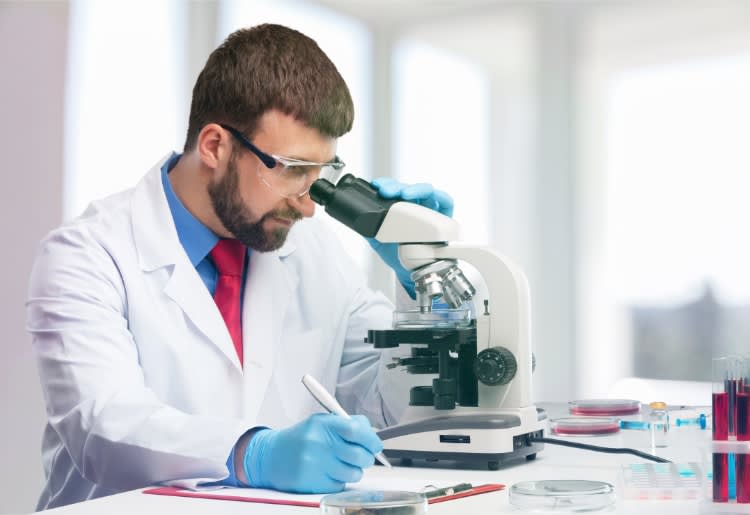For centuries, families who split up and moved to different parts of the world had no way of reconnecting. Their descendants weren’t aware of their relatives and heritage, and the only method of identifying them was by their surnames: worldwide, people would grow up with no knowledge of their historical heritage or immediate family story, beyond a few generations. They had no access to resources such as DNA testing kits.
With the advent of DNA testing, people were suddenly able to retrace their genetic steps back millions of years. DNA tests can reveal, with remarkable accuracy, several interesting genetic details, including where your genetics roots lie, which ethnicity you are, and perhaps more importantly, who your family is. Initially, it was used to determine paternity in cases of doubt, but now websites are storing huge databases containing millions of DNA results. By comparing results across databases, websites such as MyHeritage, LivingDNA, and Ancestry.com can reconnect relatives from all over the globe. All of a sudden - and for the first time ever - finding out where you come from, who your family is, and what is your true heritage is but a few clicks away.
As well as providing useful and integral information, these results can be used to help adoptees find their birth parents, especially in cases where the records were sealed. Furthermore, marital infidelity and divorce can contribute to some obscurity regarding origin, and half-siblings may be blissfully unaware of their relationships. Also, in a tragic rape case where the perpetrator is never brought to justice, the resulting offspring would have no knowledge of their patrilineal lineage. In all these circumstances, comparing DNA results from different databases can help bring closure and certainty to people who may otherwise have been left floundering, desperate to know where they really came from and what their personal genetic story is.
Genetic Genealogy
The method used to determine familial relationships and genetic links between individuals is known as “genetic genealogy.” A genealogical DNA test analyzes the specific locations of a person's genome, which can determine their ancestral ethnicity and genealogical relationships. These tests generally don’t give information regarding medical conditions or diseases. In recent years, the costs of these tests have dropped substantially, and they just require a DNA sample, such as a cheek-scraping or saliva. A testing lab then analyzes the sample, and the results are uploaded onto a database, which is privately accessed by the account holder.
Initially, the main market for genetic testing was to reveal ancestry, and to find common genetic traits among different ethnic groups. This was mainly for historical research purposes, and didn’t offer too much practical use for everyday life. Recently, the market shifted significantly, and genetic genealogy is now high in demand. Partly because of the valuable information it can convey, and partly because it’s more reliable than regular genetic ancestry testing.
Without getting overly technical, it’s useful to understand the basics of genetic testing, to know how it works, and how MyHeritage and others sites can be certain of the accuracy of the results.
There are 3 types of genetic testing:
Y-DNA
mitochondrial DNA
autosomal DNA
Y-DNA testing will only test your patrilineal lineage. This type of test can verify if two people have a common ancestor, but it cannot necessarily determine the time frame. The two people may be 4th cousins, or may have had a common ancestor a millenia ago. The technology is improving and the estimates are getting more precise, but the accuracy is still limited. Similarly, A mitochondrial DNA test (mtDna) tests only matrilineal descent. Common mtDNA ancestors can’t be dated precisely, so both these tests have significant drawbacks when it comes to testing relationships.
Autosomal DNA testing is the type that sites like MyHeritage use. This test examines 22 pairs of chromosomes and usually up to a million different genetic markers. This type of testing can be used to verify if two people shared a common ancestor in the recent past. If two people share the same DNA segments, they are very likely to be relatives, either close or distant. Autosomal tests can also provide ethnicity information, by identifying certain sections of your DNA, then comparing them to databases of modern populations to see which ethnic groups it best matches. Although, since the inheritance of DNA is largely random, siblings can sometimes have notably different ethnicity percentages. This is especially true considering that very few couples belong exclusively to one particular ethnic group, and usually have varying percentages from a mixture of groups.
How DNA matching works
Now that you have some understanding of how genetic testing functions, let’s delve into how online databases work, and how you can use it to find your relatives. If you’ve had your DNA tested, and the raw data is stored anywhere online, then you need to upload it to a centralized database so it can be compared. Currently, MyHeritage operates such a database, and people who’ve been tested and have their data stored on 23andMe, Family Tree DNA, and AncestryDNA etc. can upload their results directly.

The next step is where the magic happens. The software will sift through millions of DNA results and match any similar genetic markers. The cutting-edge technology can do this search with incredible accuracy, and will reveal if anyone who has uploaded their DNA is related to you. If you are connected to a family tree on the site, the technology can also see if anyone in your tree is related to someone else, helping to find relatives by marriage and further expanding your family network.
There are tons of really useful features, which include the ability to search by surname and DNA. This can help trace your roots back for centuries and develop a real understanding of your family's lineage. The software can also determine the nature of your relationship, i.e. 2nd, 3rd, or 4th cousin, and organize families by generation. The database is extremely sortable, also filtering by people by shared ethnicity, which helps people connect to their cultural roots, and create networks based on shared experience.
Perhaps most importantly, as mentioned earlier, people with no prior knowledge of their birth parents can now find relatives and build a picture of their biological family tree.
Advances in genetic sequencing, coupled with new computer software has given anyone with internet access the ability to get definitive answers to vital questions. The merging of DNA databases at MyHeritage is a huge step forward, and will certainly help people from all over the globe discover their roots and connect with their wider families.
